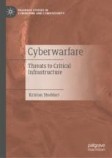Search
Search Results
-
Criminal justice officials’ attitudes towards addressing computer crimes in Thailand: Difficulties and recommendations
For the past 10 years, Thailand has been one of the top 10 countries targeted by cyber criminals. In order to address this pressing issue of computer...
-
“Just Right” Policing: a Job for Science
Research QuestionCan police develop the concept of “signal failures” to build a science of “just right” policing, learning from the mistakes of both...
-
Public Criminology in the Australian Higher Education Classroom: Bringing Criminology and History Together Through Citizen Social Science
Between 2020 and 2022, University of Tasmania criminology students and University of Newcastle history students completed an exercise in primary...
-
Digital Transformations in Forensic Science and Their Impact on Policing
Forensic technologies are now more easily transportable, fast and useable in the field by non-specialists. They help detect, collect and analyse a...
-
Don’t shoot the messenger! A criminological and computer science perspective on coordinated vulnerability disclosure
In the computer science field coordinated vulnerability disclosure is a well-known practice for finding flaws in IT-systems and patching them. In...
-
Is Machine Learning Really Unsafe and Irresponsible in Social Sciences? Paradoxes and Reconsideration from Recidivism Prediction Tasks
The paper addresses some fundamental and hotly debated issues for high-stakes event predictions underpinning the computational approach to social...
-
Putting the Cyber into Cybercrime Teaching
Criminology as a discipline has evolved over the past two decades to incorporate crimes that take place in the online world, with increasing amounts...
-
Develo** and Conducting an SSO Study: A How-to-Guide for Social Science Research
This chapter outlines the different steps of the systematic social observation (SSO) procedure. We discuss these steps chronologically: determining...
-
Introduction and Contextual Background of Cybercrime as an Emerging Phenomenon in Africa
In many ways, information, and communication technologies (ICTs) have shrunk the world, but they have also exposed the world to influences that have...
-
Communicative Shifters—Responsibility as Ultimate Normative Addressability
The semantics of responsibility has made its career in science and social practice. While, for instance, the idea of Corporate Social Responsibility...
-
Historical Evolutions of Cybercrime: From Computer Crime to Cybercrime
This chapter aims to examine cybercrime viz-à-viz technological developments by identifying key research studies in the field and crime resulting...
-
Neutralizing Cyber Attacks: Techniques of Neutralization and Willingness to Commit Cyber Attacks
Cyber attacks on critical infrastructure by ideology-based hackers may have both significant financial costs and public safety consequences. Scholars...
-
Conclusion
As argued in this book, white-collar offendersoffenders who are familiar with computer terminology can conveniently acquire malwaremalware and...
-
Lines of Emergence
This chapter is devoted to a genealogical critique of EM as a preeminent technology of contemporary government. Taking into account the pertinent...
-
Forensic Intelligence and Traceology in Digitalised Environments: The Detection and Analysis of Crime Patterns to Inform Practice
Different data processing methods can support the detection and analysis of various forms of crime patterns. The authors document the influence and...
-
Overlapped Bayesian spatio-temporal models to detect crime spots and their possible risk factors based on the Opole Province, Poland, in the years 2015–2019
Geostatistical methods currently used in modern epidemiology were adopted in crime science using the example of the Opole province, Poland, in the...

-
Methodology
This chapter describes the methodology that we have used in our citation analysis research. We go into detail regarding the main sources of citation...
-
Honeypots for Cybercrime Research
Honeypots are a type of cybersecurity tool designed with the general purpose of being attacked and compromised by cyberthreats. They became widely...
-
Hacking the Human
Hacking the human has three main parts. The first part analyzes social engineering methods and practices. The second part is the world of...
-
The Police Power of Finance, Technology, Housing, and Education
Policing is not primarily what law enforcement does, or what occurs through the operations of the criminal justice system. More fundamentally, it is...
